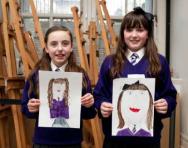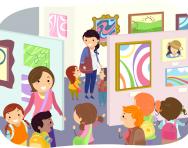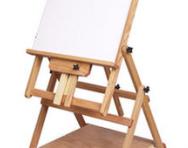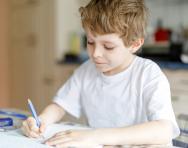Key Stage 2 art explained
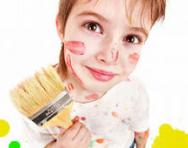
Find out what your child will be doing in art lessons at school, plus four top tips to foster your child's creativity at home.
In KS2 art, children are taught:
- to develop their techniques, including their control and their use of materials, with creativity, experimentation and an increasing awareness of different kinds of art, craft and design.
- to create sketch books to record their observations and use them to review and revisit ideas.
- to improve their mastery of art and design techniques, including drawing, painting and sculpture with a range of materials (for example, pencil, charcoal, paint, clay).
- about great artists, architects and designers in history.
KS2 art lesson examples
Here’s what children have got up to in art in some schools:
- Year 3 pupils use textures and patterns to create their own mythical creatures. They sketch parts from different animals to create a hybrid creature. After photographing their drawings with a digital camera, they learn how to manipulate images using image-editing software.

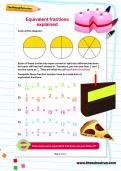
Start a unique learning programme!
- Weekly programme for each school year
- Worksheets sent direct to your inbox
- Keeps your child's learning on track
- During a visit to the British Museum, a Year 4 class learns how Native American artists used symbols and other visual elements to convey ideas.
- Year 5 pupils work with a digital artist to explore their own self-image. The pupils explore composition by using layers and transparency. Some pupils juxtapose images of themselves and their friends to illustrate how they feel about their friendships.
- Fantasy and recycling are the themes for a year 6 project in which pupils make 3D sculptures of robots. To help generate ideas they study machine parts and make observational drawings using pencil, charcoal, pastel and paint. Later they create digital images, too.
Develop your child's artistic and creative side at home
- The scrapbook is a key tool for the art student, so help your child get ahead by encouraging them to keep one at home. The book can be used as a treasure trove for ideas and inspiration. It might include notes, materials and observations on interesting objects, plants, buildings and people.
- Encourage your child to develop and practise the skills of drawing from observation to increase and sustain their concentration.
- Look out for opportunities to visit museums and exhibitions to learn more about paintings, ceramics, textiles and other designed objects (remember, lots of museums offer free virtual visits to their galleries so you can take a tour without leaving your home!). Some also stage talks by artists and designers that offer a deeper understanding of their work.
- Encourage your child's critical awareness through questions like, “What is this work about?”, “Why was it made?”, “What visual and tactile elements are used?”

Give your child a headstart
- FREE articles & expert information
- FREE resources & activities
- FREE homework help
By proceeding you agree to our terms and conditions. For information on how we use your data, see our privacy policy. You will receive emails from us but can opt out at any time.


